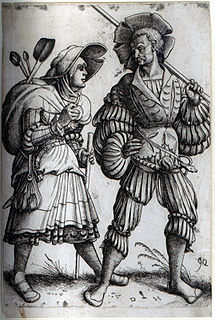
The Académie Julian was a private art school for painting and sculpture founded in Paris, France, in 1867 by French painter and teacher Rodolphe Julian (1839–1907) that was active from 1868 through 1968. It remained famous for the number and quality of artists who attended during the great period of effervescence in the arts in the early twentieth century. After 1968, it integrated with ESAG Penninghen.

Samuel Siegfried Bing, who usually gave his name as S. Bing, was a German-French art dealer who lived in Paris as an adult, and who helped introduce Japanese art and artworks to the West and was a factor in the development of the Art Nouveau style during the late nineteenth century.

Jacques Joseph Tissot, Anglicized as James Tissot, was a French painter and illustrator. He was a successful painter of Paris society before moving to London in 1871. He became famous as a genre painter of fashionably dressed women shown in various scenes of everyday life. He also painted scenes and characters from the Bible.
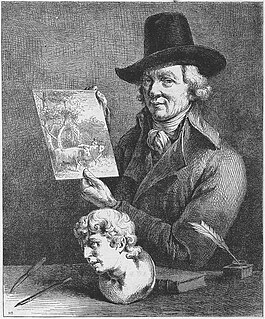
Jean-Jacques de Boissieu was a French draughtsman, etcher and engraver

James Sidney Edouard, Baron Ensor was a Belgian painter and printmaker, an important influence on expressionism and surrealism who lived in Ostend for almost his entire life. He was associated with the artistic group Les XX.

Marie Bracquemond was a French Impressionist artist, who was described retrospectively by Henri Focillon in 1928 as one of "les trois grandes dames" of Impressionism alongside Berthe Morisot and Mary Cassatt. Her frequent omission from books on artists is sometimes attributed to the efforts of her husband, Félix Bracquemond.

Claude Ferdinand Gaillard was a French engraver and painter, who had been born and died in Paris.
Paul Bough Travis was an American artist of the Cleveland School.

Le Musée d'Art Moderne de Céret is a modern art museum in Céret, Pyrénées-Orientales, France, created by Pierre Brune and Frank Burty Haviland in 1950 with the personal support of their friends Pablo Picasso and Henri Matisse who were involved in its creation.

Anne Goldthwaite (1869–1944) was an American painter and printmaker and an advocate of women's rights and equal rights.

Alfred Brunet-Debaines was a French artist and printmaker who depicted street scenes and architecture, and who was the son of the architect Charles-Louis-Fortuné Brunet-Debaines. In 1863, he began his art studies at the Ecole des Beaux-Arts, Paris. During this period he learned etching techniques under masters such as Maxime Lalanne and Jules-Ferdinand Jacquemart (1837–1880). Alfred Brunet-Debaines exhibited his first etchings at the Paris Salon in 1866. Around 1870, he was invited to England by writer and critic Philip Gilbert Hamerton who commissioned him to contribute original etchings to his publications, the monthly magazine The Portfolio and Etching and Etchers. Brunet-Debaines thus spent a considerable part of his prolific career in London and Scotland, and regularly exhibited at the Royal Academy between 1872 and 1886. Museums in France and England include examples of his etchings in their permanent collections. In 1882, he was elected a member of the Royal Society of Painter-Etchers and Engravers. Museums in France and England include examples of his etchings in their permanent collections.

Frank Burty Haviland was a French Cubist painter, a friend and early client of Picasso and Braque, and an early collector of African art.
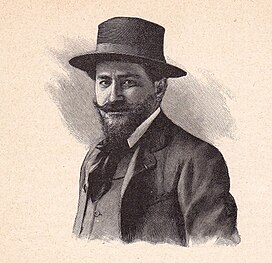
Jules Adler was a French painter, named «le peintre des humbles» by Louis Vauxcelles, a painter of labour, strikes and working people.

The Battle of the Kearsarge and the Alabama is an 1864 oil painting by Édouard Manet. The painting commemorates the Battle of Cherbourg of 1864, a naval engagement between the Union cruiser USS Kearsarge and the Confederate raider CSS Alabama. Many spectators were able to see the battle from the coast of France and saw that the USS Kearsarge sank the CSS Alabama. Not having witnessed the battle himself, Manet relied on press descriptions of the fight to document his work. Within one month of this battle, Manet had already completed this painting and got it on display in the print shop of Alfred Cadart in Paris.

Gabriel P. Weisberg is an American art historian.
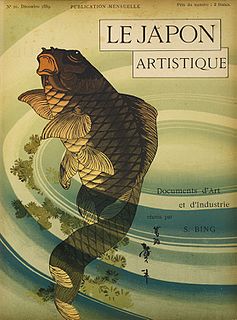
Artistic Japan was a magazine of Japanese art, published by German-born French art dealer Siegfried Bing. It ran for thirty-six monthly issues from 1888 to 1891 in French, English, and German editions and contributed to a revival of Japonism.
George Charles Aid or George Aid (1872–1938) born in Quincy, Illinois, was an American painter, etcher and teacher known for portrait, landscape and genre painting. Aid was active in France, the Netherlands and The Carolinas.
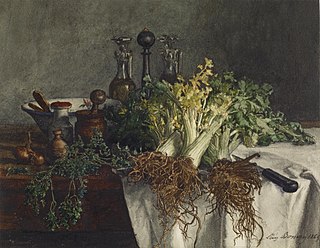
Charles Léon Bonvin was a French watercolor artist known for genre painting, realist still life and delicate and melancholic landscapes.

The Cleveland Museum of Art (CMA) is an art museum in Cleveland, Ohio, located in the Wade Park District, in the University Circle neighborhood on the city's east side. Internationally renowned for its substantial holdings of Asian and Egyptian art, the museum houses a diverse permanent collection of more than 61,000 works of art from around the world. The museum provides general admission free to the public. With a $755 million endowment, it is the fourth-wealthiest art museum in the United States. With about 770,000 visitors annually (2018), it is one of the most visited art museums in the world.
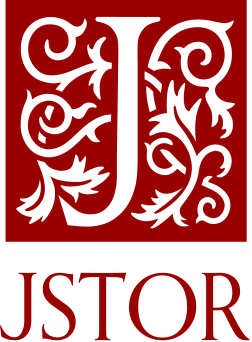
JSTOR is a digital library founded in 1995. Originally containing digitized back issues of academic journals, it now also includes books and other primary sources, and current issues of journals. It provides full-text searches of almost 2,000 journals. As of 2013, more than 8,000 institutions in more than 160 countries had access to JSTOR; most access is by subscription, but some of the site's public domain and open access content is available at no cost to anyone. JSTOR's revenue was $86 million in 2015.



